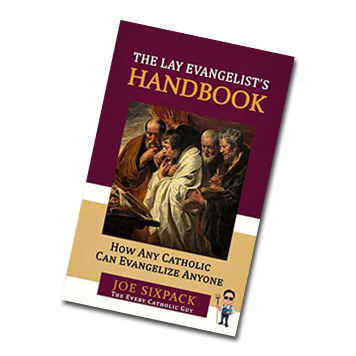The Ascent And Legacy Of St. Camillus De Lellis
By RAY CAVANAUGH
Camillus de Lellis went from being a penniless gambling addict to the founder of the Ministers of the Infirm and an icon of medical charity. Canonized in 1746, his feast day is July 18.
He was born on May 25, 1550, in Italy’s Abruzzo region, then part of the Kingdom of Naples. His mother, who was advanced in age at the time of his birth, died when he was 13. Camillus received little to no formal education. Instead, at a young age he followed his father into the mercenary soldier’s profession. Among other combat endeavors, Camillus fought on behalf of Venice against the Turks. The father soon suffered a violent death, but the son was unfazed.
Camillus had an intimidating presence, reportedly standing at 6-foot 6-inches — a towering stature by today’s standards but doubly so in his era. He also had an irascible demeanor, which led to violent encounters even off the battlefield. The website of the Irish Camillians (orderofstcamillus.ie) describes the future saint as a “man of violence” who “lived a dangerous life.”
Though Camillus survived his violent years, he incurred a leg wound during this period that would continue to trouble him permanently. And after gambling away all the money he made as a mercenary, he “ended up like a stray dog, a wanderer with nowhere to go” and was reduced to begging outside churches, relates the website of the Italian Camillians (camilliani.org), which provides an English translation of the book Ritratti di Santi by Antonio Sicari.
Eventually Camillus found a temporary job pushing stones and other supplies to the building site of a Capuchin friary. He once encountered a friar who took him aside and said, “God is everything. The rest is nothing. One should save one’s soul which does not die.” His exposure to such religiously ardent persons began to influence his spirit.
His moment of conversion came at age 25, when, while on horseback, he became so overwhelmed by his wayward lifestyle that he tumbled from the horse. Upon regaining his footing, he vowed to live the remainder of his days for God and declared “no more the world for me.”
He proceeded to join the Capuchin Order as a novice. But he never made it as a permanent member because the harsh Capuchin garments re-aggravated his leg wound and compelled him to head to Rome in search of treatment.
While recuperating in a Roman hospital, Camillus observed that extremely sick persons received substandard treatment. Some of the patients in especially wretched condition were abandoned at the gates of the hospital. The unsettling reality in that era was that many hospital workers were not there of their own volition; some of them could find no other job, while others were forced to work at the hospital as a form of punishment for criminal wrongdoing. So morale was worse than low, and many of the staff were already of a dubious character.
Camillus realized that, in order for any good to come of the situation, those who worked with the very sick had to truly want that job. So he resolved to establish an order with members who would devote themselves to the care of the sick, particularly the contagious sick, such as those suffering from the plague.
As noble as his goal was, many doubted its viability. After all, who would want to sign up for such gritty and perilous work?
But Camillus found a way to enlist members and established the Order of the Ministers of the Infirm in 1582 (members of this order are now known as Camillians). Aside from the typical vows of poverty, chastity, and obedience, Camillians take an additional vow to treat the sick even when such persons are infectious with a lethal condition. And they strive to espouse the founder’s view that “The sick poor are the eyes and heart of God” and “What you did to these poor people you did to God Himself.”
The website catholic.org tells how early Camillians tended to the sick patients of Rome’s Holy Ghost Hospital, before establishing a facility in Naples. They would return to Rome, where they tended to those stricken with the plague. Additionally, Camillus sent members to serve at sites of military conflict, thereby becoming the first-known field medical service.
Quite exhausted from all his duties, Camillus died at age 64 on July 14, 1614. Sicari’s book relates that, by the end of his lifetime, Camillus had launched eight hospitals and 14 religious houses in such Italian cities as Genoa, Mantua, and Milan, in addition to Naples. Furthermore, his order had recruited more than 240 members, along with some 80 novices.
More than four centuries onward, the Camillian legacy is firmly implanted across the world. The order now operates in 35 nations, and its total membership consists of about 1,100 priests, brothers, and students, according to the USA Delegation of the Order of St. Camillus (camillians.org).
Aside from the international expansion of his order, Camillus now endures as a patron of hospitals, nurses, and, of course, the sick.










